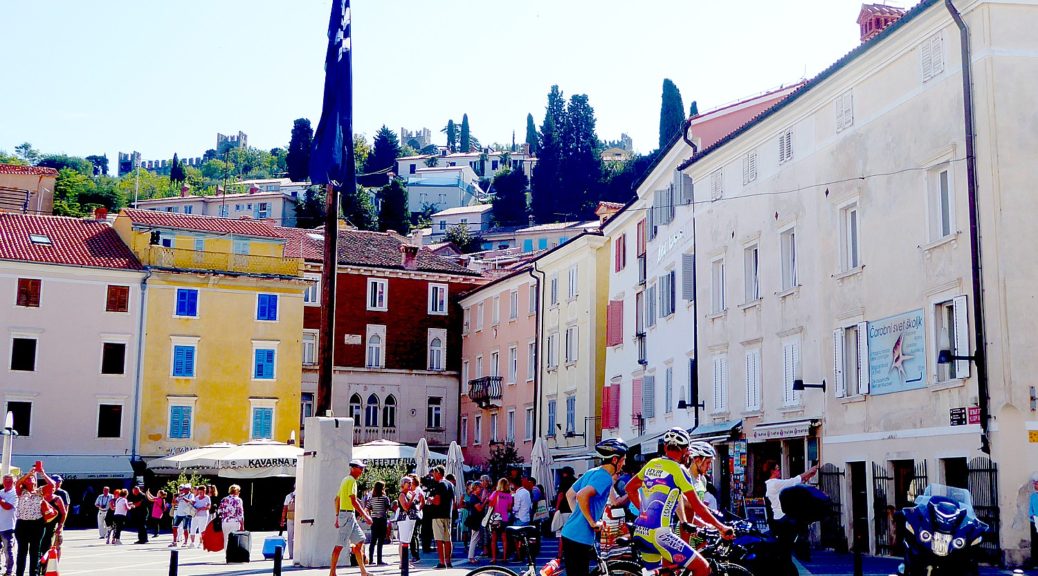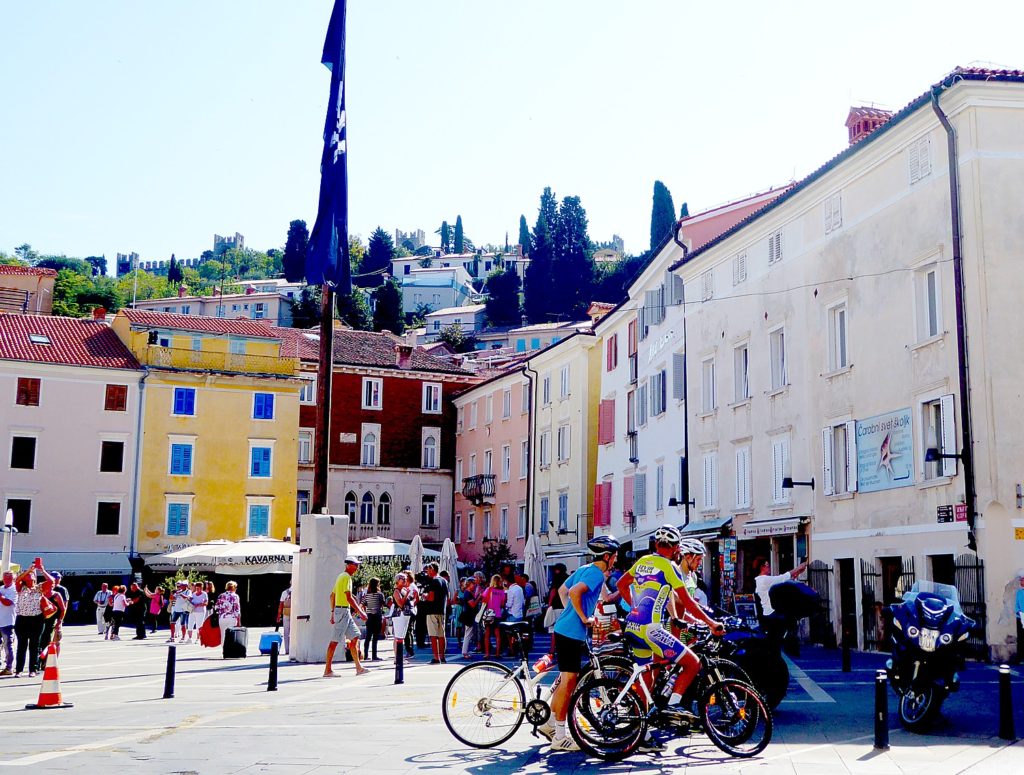
By Karen Rubin, Travel Features Syndicate, goingplacesfarandnear.com
When I signed up for Biketours.com’s guided eight-day “The Emerald Tour of Slovenia’s Gems” bike tour, I was expecting sprawling landscapes and quaint villages. What I wasn’t expecting was to be surprised each day by some unique attraction. The final days of the trip bring us to the stud farm in Lipica where the famous Lipizaner horses, so identified with Vienna, were first bred, to Skocjan Caves, so special as to be designated a UNESCO World Heritage site, and the enchanting medieval city of Piran.
Day 5: Štanjel – Lipica – Divaca (30 miles/48 km)
Our fourth day of riding brings us first to the lovely village and botanical garden in Sežana, which is at the stop of a high hill (all castles are), in a very quaint village.
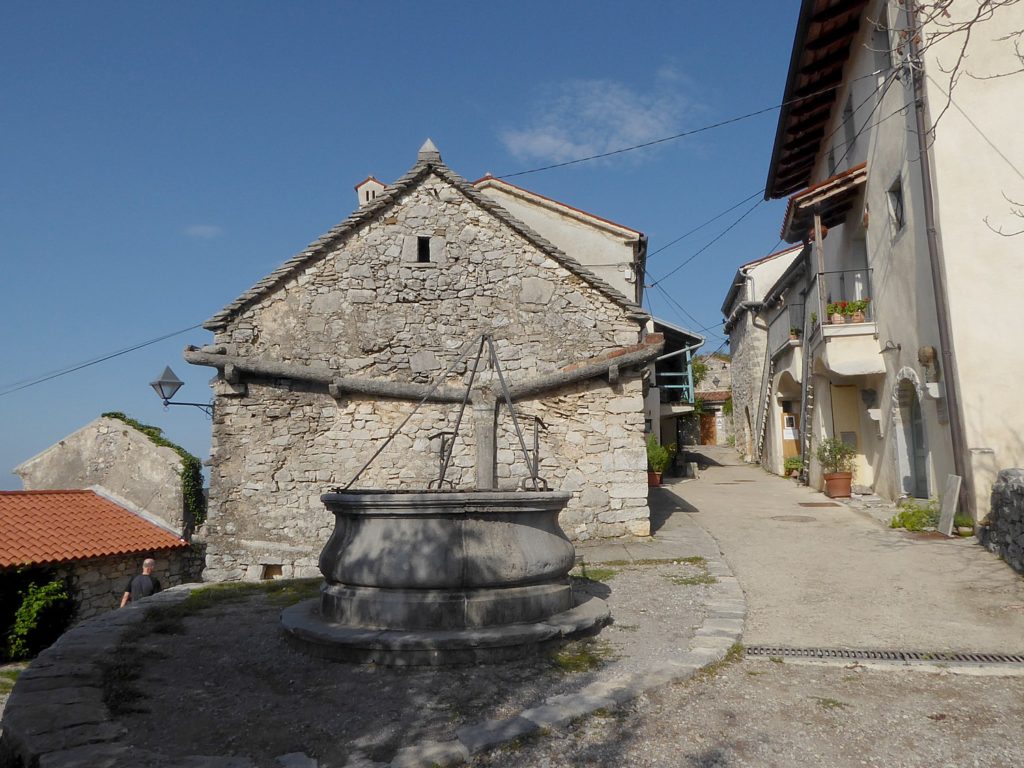
We stop in a nearby village to buy food for lunch and picnic in a rather scenic spot under a tree just next to a cemetery.
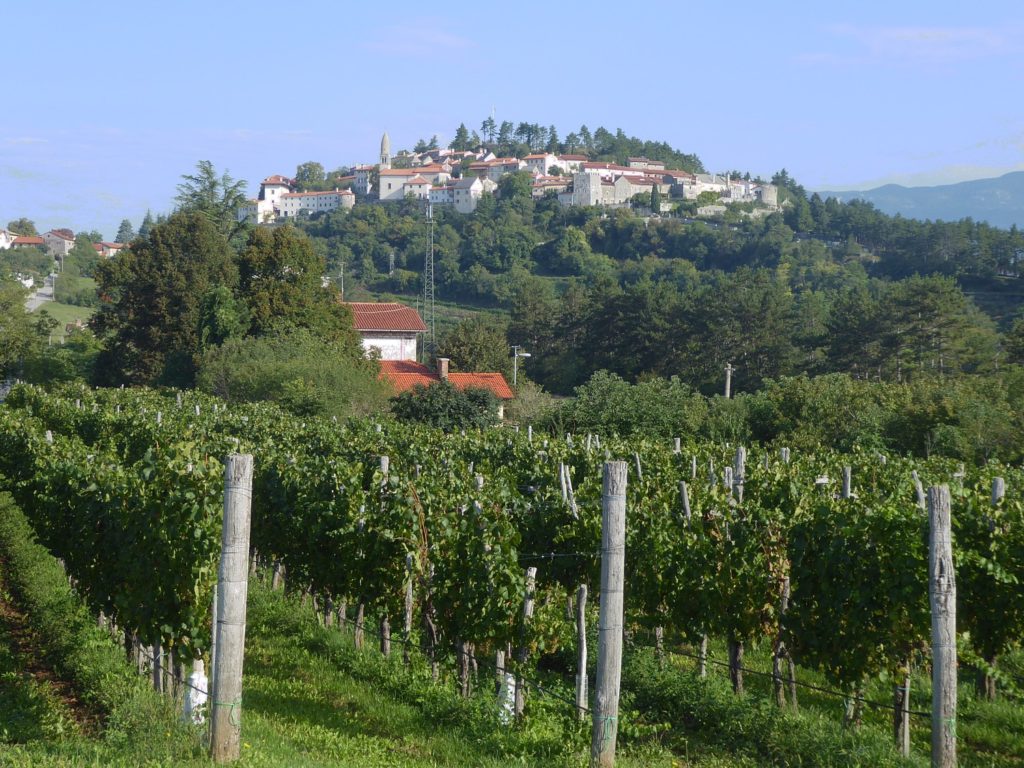
Then it’s on to the stud farm of Lipica, where we visit these beautiful thoroughbred Lipizaner horses whose glistening white coats and gentle, graceful dancing have earned them a worldwide reputation. The history of the Lipica horses is closely linked to the Vienna riding school, because this part of the country used to be part of the Austro-Hungarian Empire. They continue to breed and train the famed horses here.
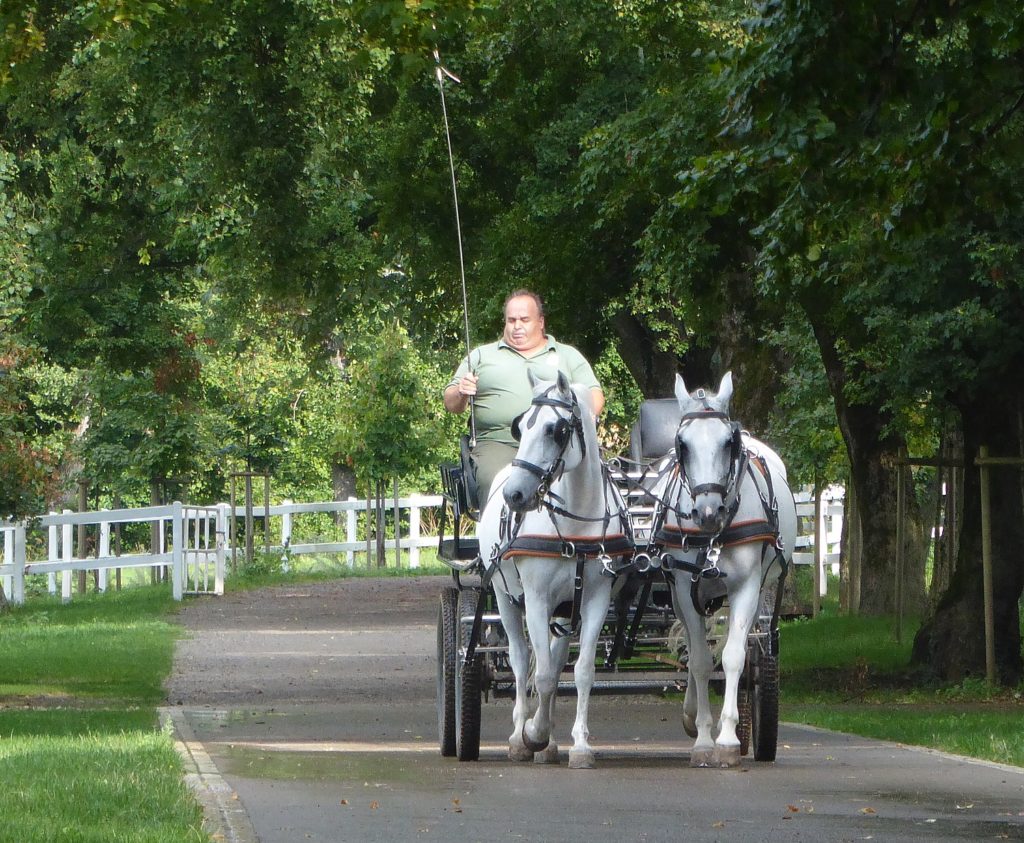
Founded some 430 years ago, this is claimed to be the oldest stud farm in the world. The Archduke of Austria bought it in 1580 – the Turkish Empire had invaded and Austrians needed horses for the military. They bred the local karst horse – well built, muscular, intelligent, long lived – with Spanish stallions and later Arabian and Italian stallions.
We get to visit the stables and learn that the white color is the result of selective breeding from the 1750s, but not all the horses are white.

Touring Lipica stud farm where the famous Lipizaner horses are bred © Karen Rubin/goingplacesfarandnear.com
We visit the stables, the Lipikum Museum, the museum of carriages, an art gallery, and on the way out, see the horses in pastures, tree avenues (they used to plant trees in honor of the horses that were sent to Vienna).
There are other experiences available here (including a luxury hotel and casino), but we have arrived at the end of the day.
We finish the day’s ride at the Hotel Malovec, where the owner, a butcher, also opened a restaurant (he also owns the Hotel Kras where we stayed in Postojna). I have a massive t-bone steak.
Day 6: Divaca – Muggia (23 miles/38 km)
This day offers the most varied of experiences, beginning with a hike through Skocjan Caves (a UNESCO natural monument), biking 39 km through countryside to the picturesque town of Muggia on the Bay of Trieste, where we arrive early enough in the afternoon to get to swim in the Adriatic (or we can take the ferry into Trieste).
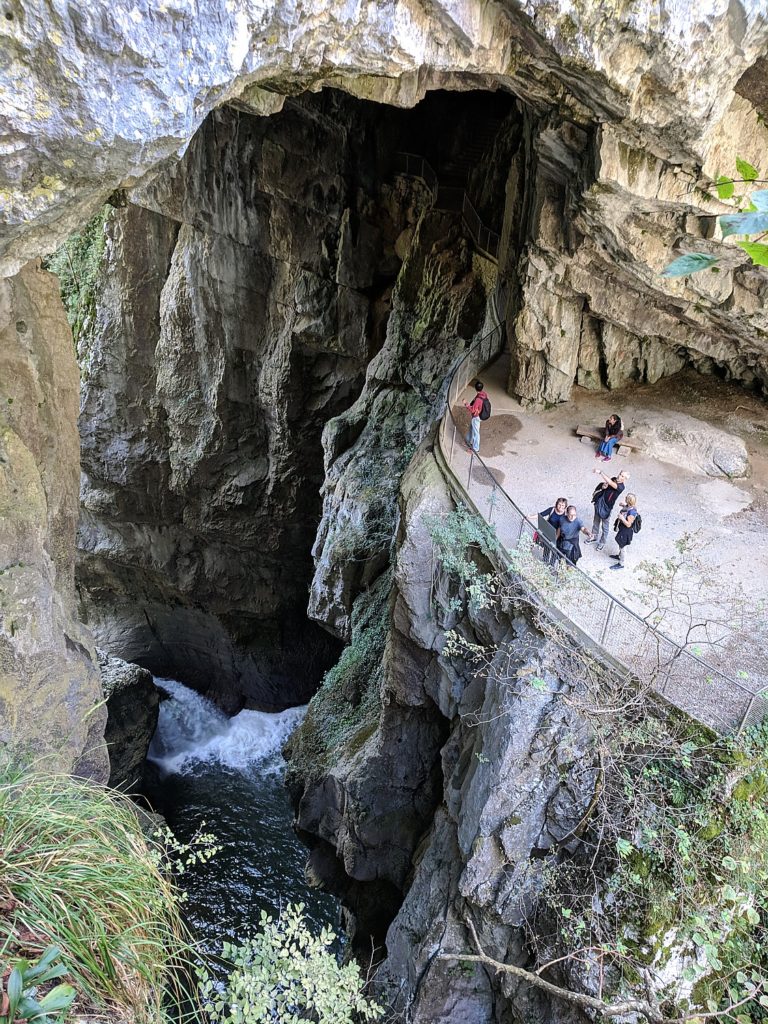
Visiting the Skocjan Caves is no less spectacular than the Postojna Caves (minus the thrilling train ride) but the experience is quite different – this is more of a hike, but unbelievably spectacular – the highlight is walking over a bridge 45 meters above a roaring river.
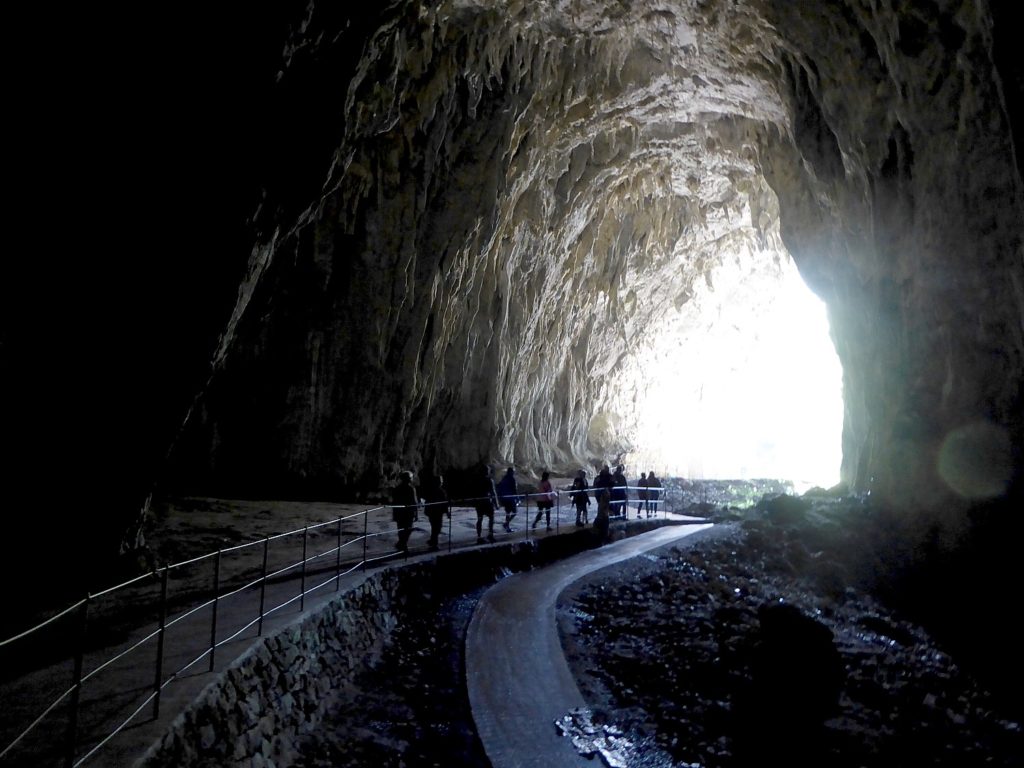
Ranking among the most important caves in the world, the caves, one of the largest known underground canyons in the world were designated a UNESCO natural world heritage site in 1986.
What distinguishes Škocjan Caves from other caves and places it among the most famous underground features in the world is the exceptional volume of the underground canyon and the Rika River that still rushes through. An underground channel is 3.5 km long, 10 to 60 m wide and over 140 m high. At some points, it expands into huge underground chambers. The largest of these is Martel’s Chamber with a volume of 2.2 million cubic m, believed to be the largest discovered underground chamber in Europe and one of the largest in the world.
The existence of the cave has been known since ancient times (and the area is rich with archeological sites), but concerted exploration of Škocjan Caves began in 1884. Explorers reached the banks of Mrtvo jezero (Dead Lake) in 1890. Silent Cave (Tiha jama) was discovered in 1904, when some local men climbed the 60-metre wall of Müller Hall (Müllerjeva dvorana). Then, in 1990, nearly 100 years after Dead Lake was discovered, Slovenian divers managed to swim through the siphon Ledeni dihnik and discovered 200 m of new cave passages.
The cave is colossal, other worldly, that takes your breath away as you walk through in the course of this 2-hour, 2 km tour, during which we will climb/descend some 500 steps.
There are two main parts to the cave that we get to visit Thajama (Silent Cave), the part that was discovered in 1904, and “Water Murmuring” Cave (more like water roaring), which has been opened to tourists since 1933.
We are marched through the cave (they have an extraordinary number of visitors each day) and periodically stop for the guide to give us narration. We are informed about the collapsed ceiling in the Silent Cave, the result of an earthquake 12,000 years ago.
The canyon’s most spectacular sight is the enormous Martel Chamber. The Great Chamber is 120 meters long, 30 meters high. It takes 100 years for 1 cm of stalagmite to grow, and we see the biggest “dreamstone,” Giant, 15 meters tall.
We see a square pool of water which was carved by the first explorers and the original stairs that were carved with hand tools by these early explorers – mind-boggling to contemplate. They originally came into the cave following the river, to find a supply of drinkable water for Trieste.
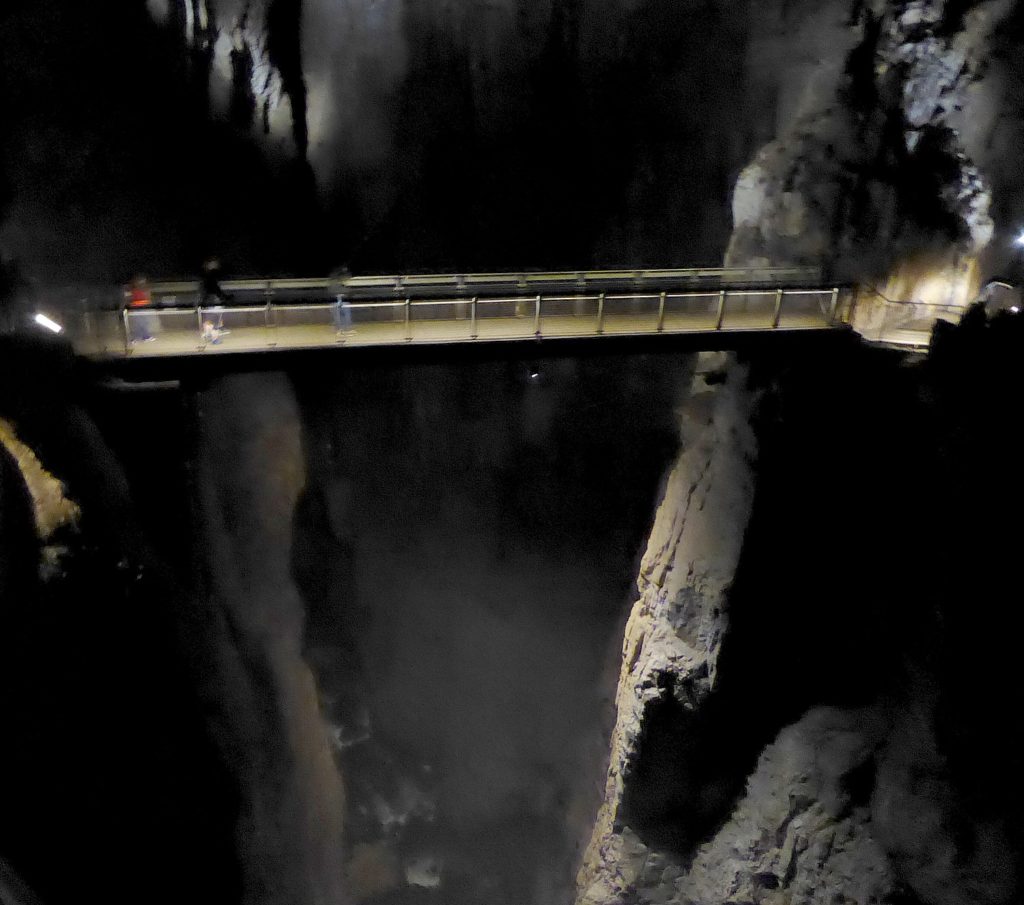
We walk over the suspension bridge, 45 meters above the river – an incomparable thrill. Prone to flooding, as recently as 1965, the river rose 106 meters higher, almost to the ceiling, so the entire cave would have been underwater.
You almost swoon with the depth below and height above and space all around – you feel so small. Looking back to the other side, the flow of people coming down the lighted trails look ants.
At the very end, there is an odd area where tourists from a century ago used to actually carve names into the rock.
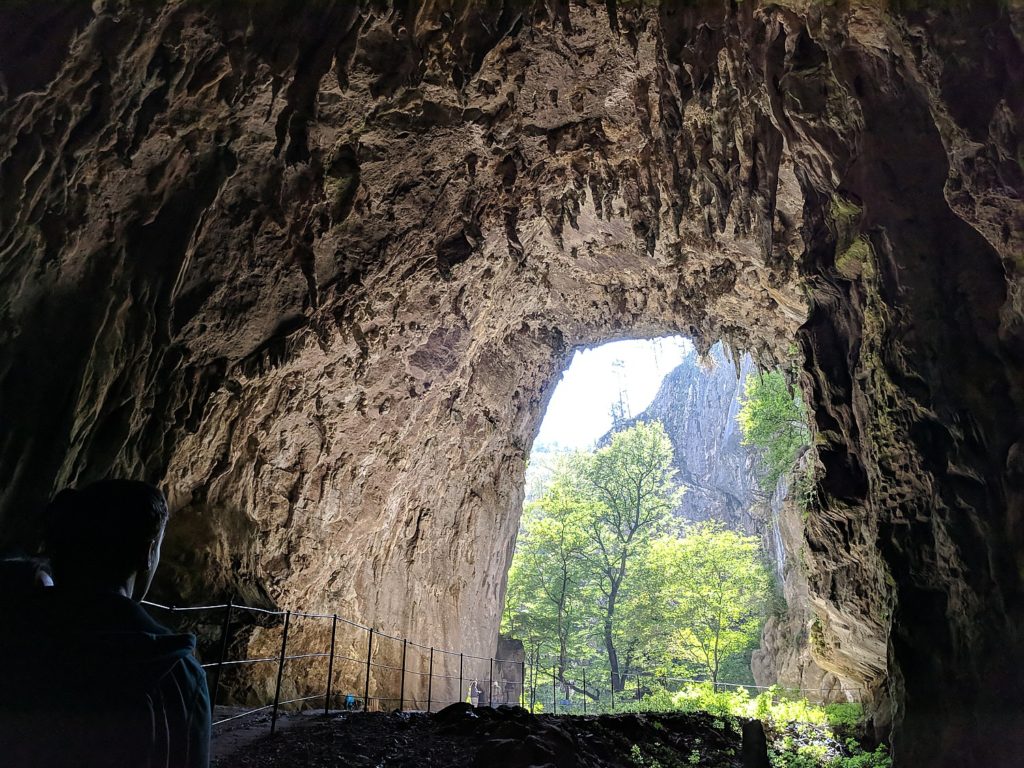
We come through the enormous opening – there is an option to take a cable car back up, but I am delighted to continue to hike. You come upon a dazzling view down to the rushing water flooding through an opening in the rock. You again get a sense of scale by how small the people are nearest to the rushing water.
It’s very cool in the caves and you should wear decent footgear and a hat (water drips down).
(Skocjan Cave is open daily, but you enter with an organized tour at specified times; 16E/adults, 12E/Seniors & students, 7.5E children, travelslovenia.org/skocjan-caves/)
With a cheer of “Gremo!” (“Let’s go”), from Vlasta, our guide, we’re off.
Vlasta is good natured and good hearted, patient and considerate. She knows how to organize and keep us in order without being tough, and has a great sense of humor.
We picnic again, this time along the country road (not as scenic as yesterday’s cemetery) amid sounds of a new highway.
Our ride today, 42 km, is mostly downhill, some of it along the seacoast, to get to Muggia, on the Bay of Trieste, where we overnight at the Hotel San Rocco, a very pleasant seaside hotel in the marina (with its own swimming pool).
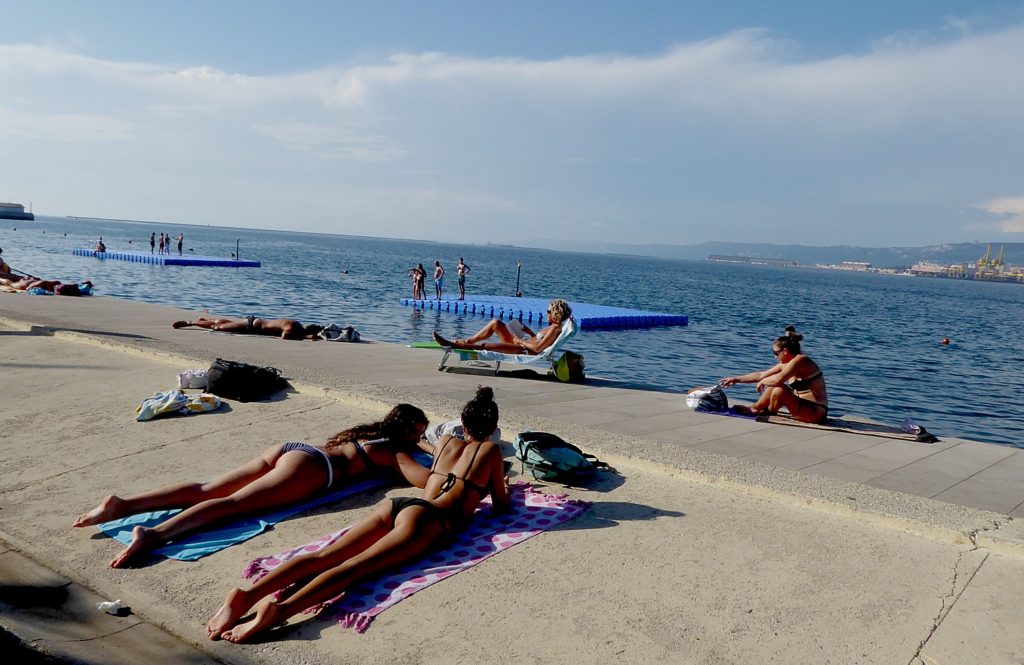
We arrive about 3:30 in the afternoon and have the option to take the convenient ferry (half-hour) to Trieste (I had come through Muggia (and Trieste) the week before on the Venice-Trieste-Istria biketour.). I decide to have a leisurely afternoon, enjoying swimming in the Adriatic off the stone beach, and then walking through the picturesque town.
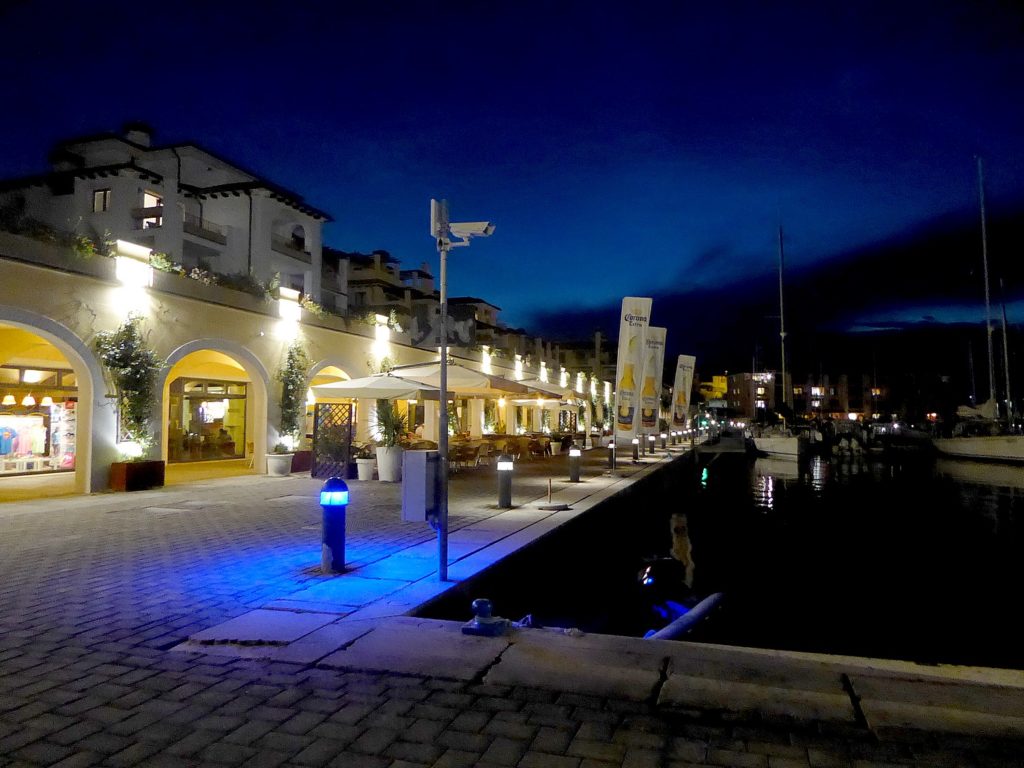
A few of us took the ferry into the city of Trieste in Italy – once an important port with its worldly flair and wonderful atmosphere –where you could visit the castle, cathedral and Piazza Unita central square.
We have a farewell dinner at a delightful waterfront restaurant in the plaza outside the hotel Vlasta, our guide -ever patient, considerate, excellent humor, knowledgeable, she asks us to vote, “Democracy rules,” and tailors the experience to what the group wants – will be leaving us after she delivers us to our end-point in Piran the next day and presents us with certificates of completion of the tour.
Day 7: Muggia – Piran (23 miles/37 km or 30 miles/48 km with side trip)
Today’s ride, 46 km from Muggia to Piran, brings us along the coastal road on a new cycling path following a former railway line. There are beautiful vistas of Slovene coast (Slovenia has only 44 km of shoreline).
We ride through Koper, a major port city, which also has a picturesque old town and Tito Square, one of few squares still with Tito’s name. There is a beautiful Romanesque cathedral and a town hall and a market.

There is an exquisite view of Izola from top of trail at first of three tunnels which were built for trains, and now is used for the rail-trail.
We stop at a restaurant in the fashionable resort of Portorož before riding into the adjacent village of Piran, on the tip of a peninsula. On my prior trip, we had come to Portoroz but not as far as Piran, and now I see how enchanting this tiny Venetian harbor village is.
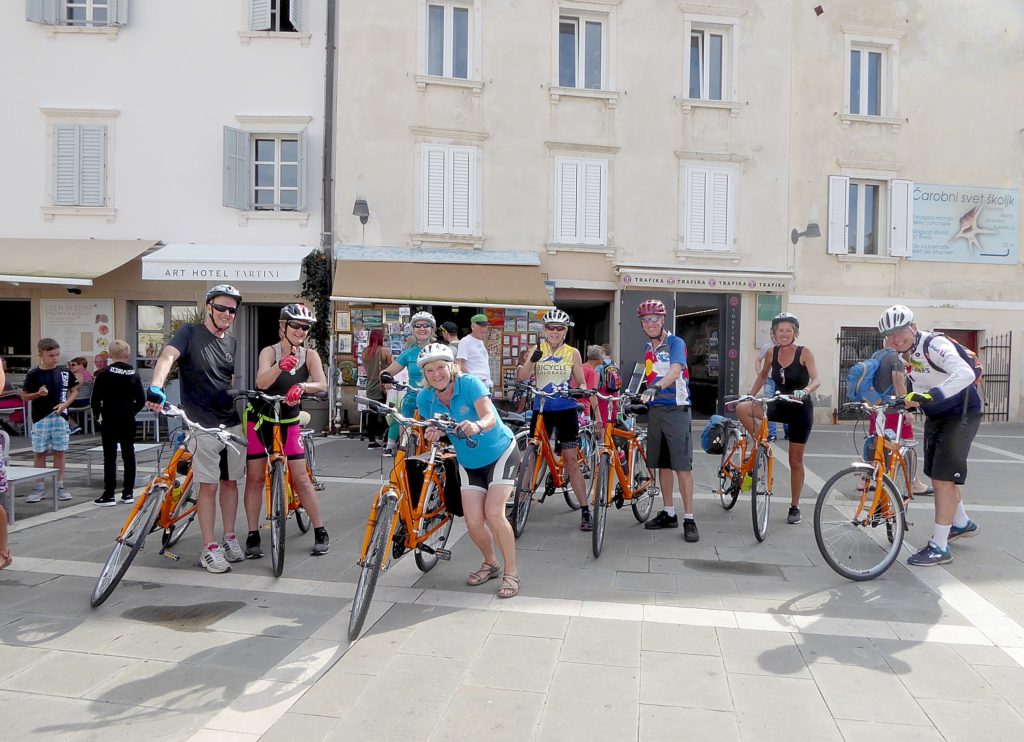
Our hotel, the Art Hotel Tartini (very chic, it prides itself on looking artfully unfinished), overlooks the massive piazza, and is steps away from the rocky border that serves as a beach for people to swim in the Adriatic. The hotel has beautiful outdoor patio/bar and rooftop bar. My balcony overlooks the main square.
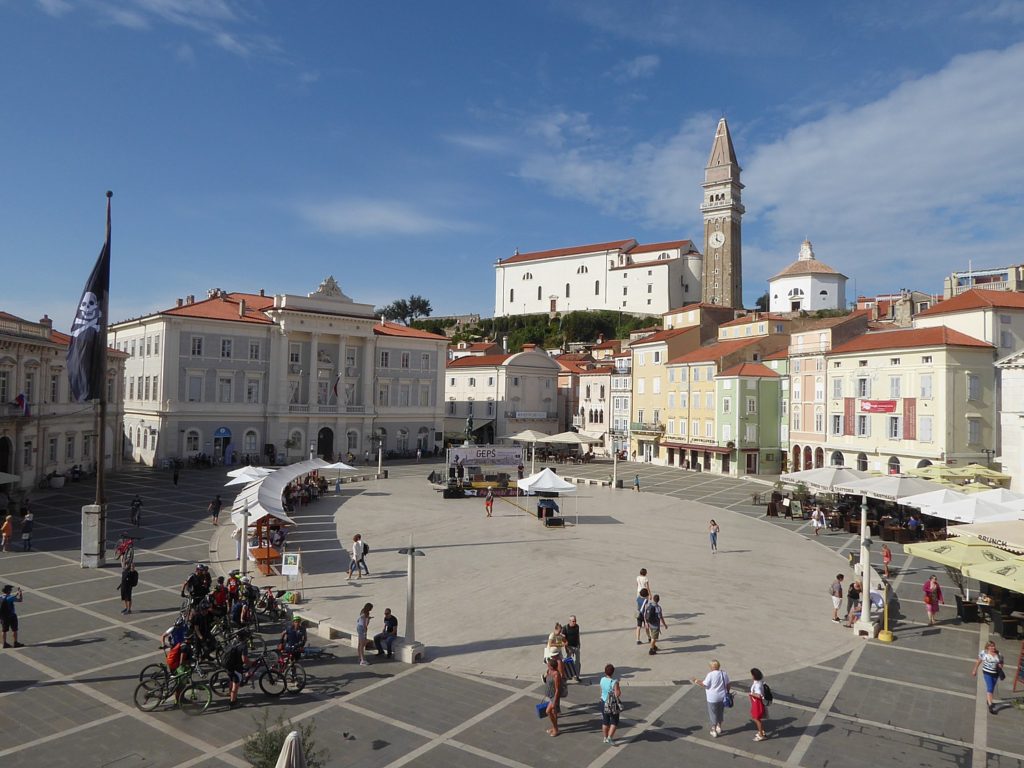
I go off to explore – finding myself on this last full day in Slovenia much as the first: climbing fortress walls that oversee the city.
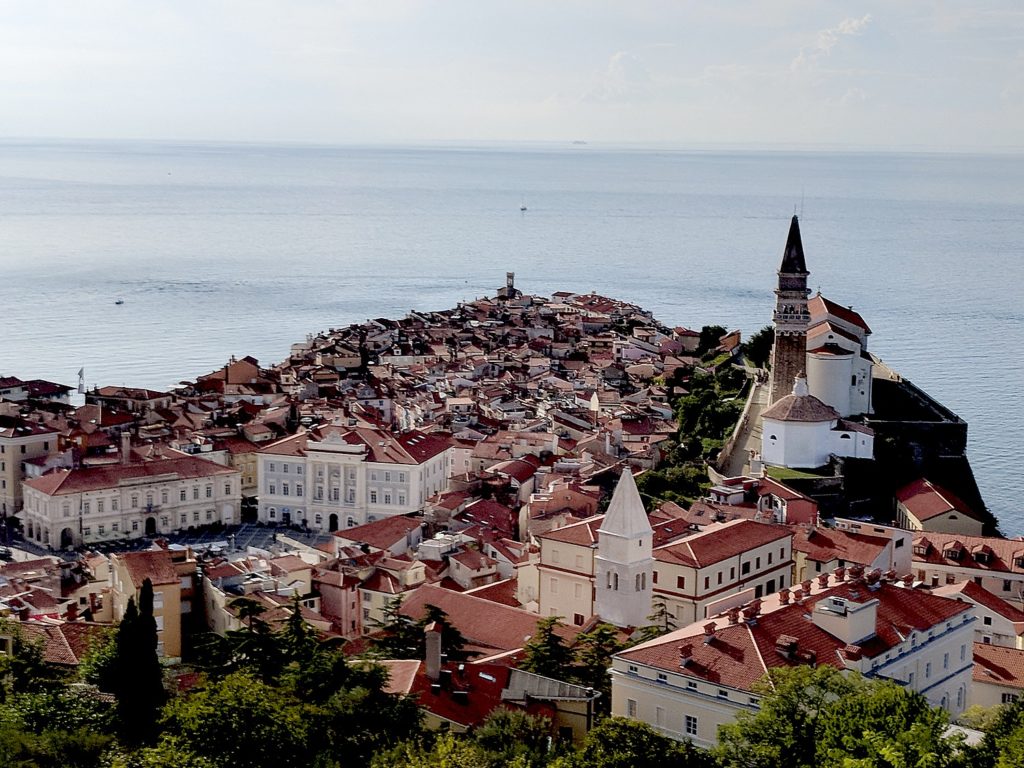
I visit the historic church and walk the Town Walls (2E to climb) that offers a spectacular view of the Peninsula (it occurs to me the symmetry of ending my Slovenia biketour the same way I started, looking down at the city from castle walls). The fort dates from the 10th century – the Venetians ruled for 500 years.
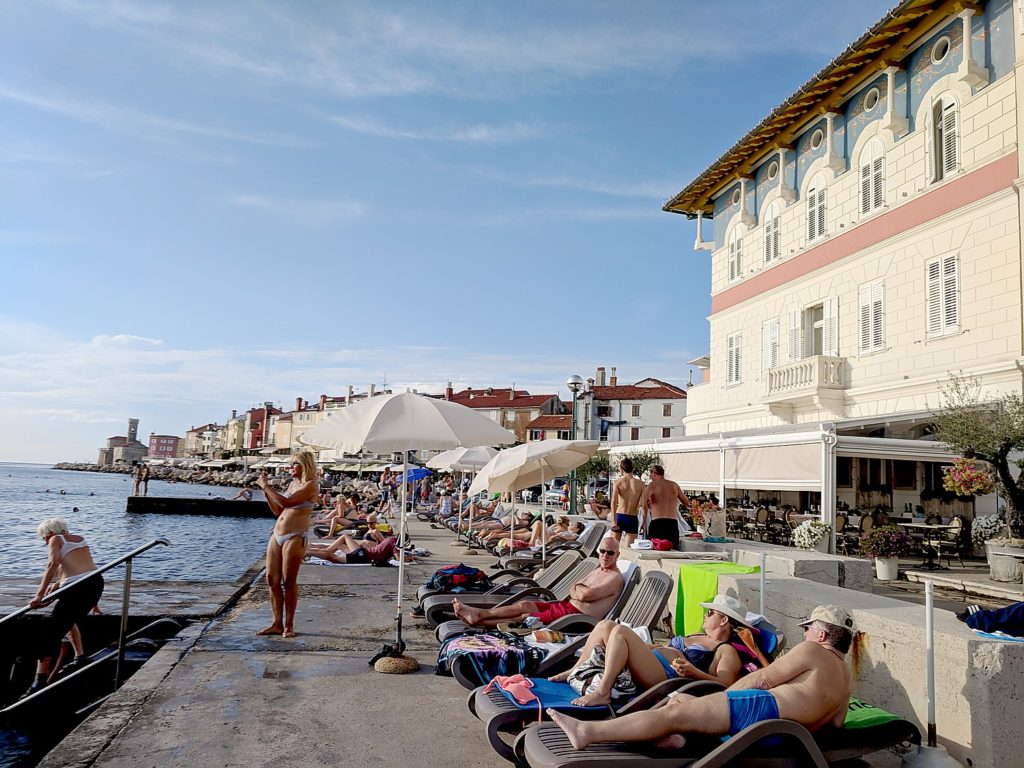
I go off to swim before meeting our group for our last dinner together, at the Ivo restaurant, right on the water where we are treated to a gorgeous sunset.
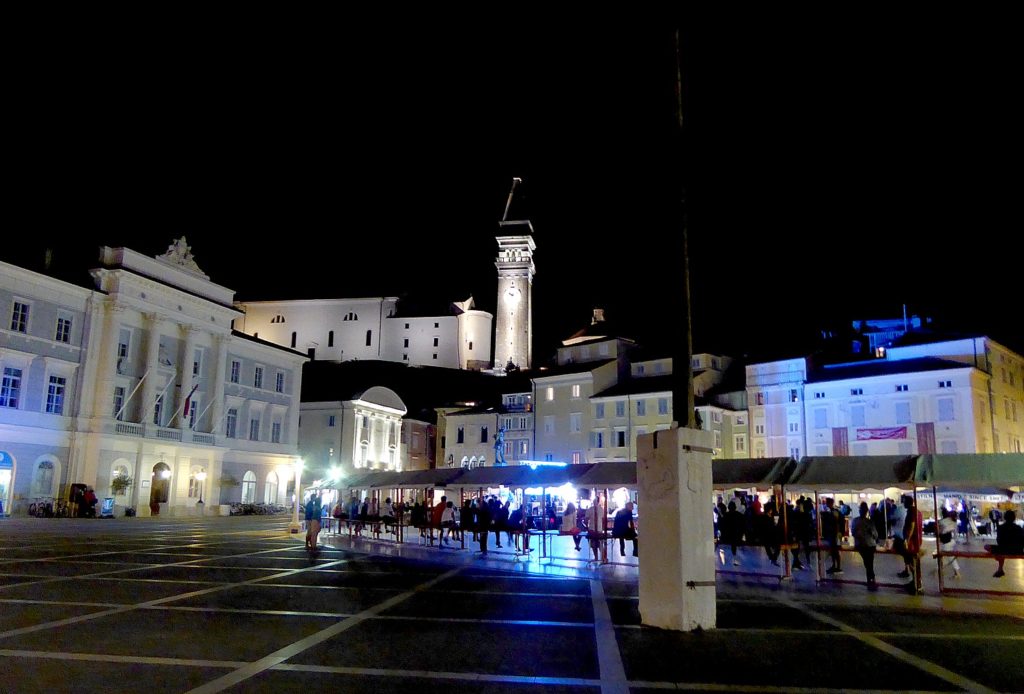
The next morning, I have more time to enjoy Piran before I catch my bus at the Portoroz bus station for the airport in Venice.
There is a pirate festival underway, and a Slovenian Navy battleship in the harbor (very possibly in celebration of the end of World War I a century earlier).
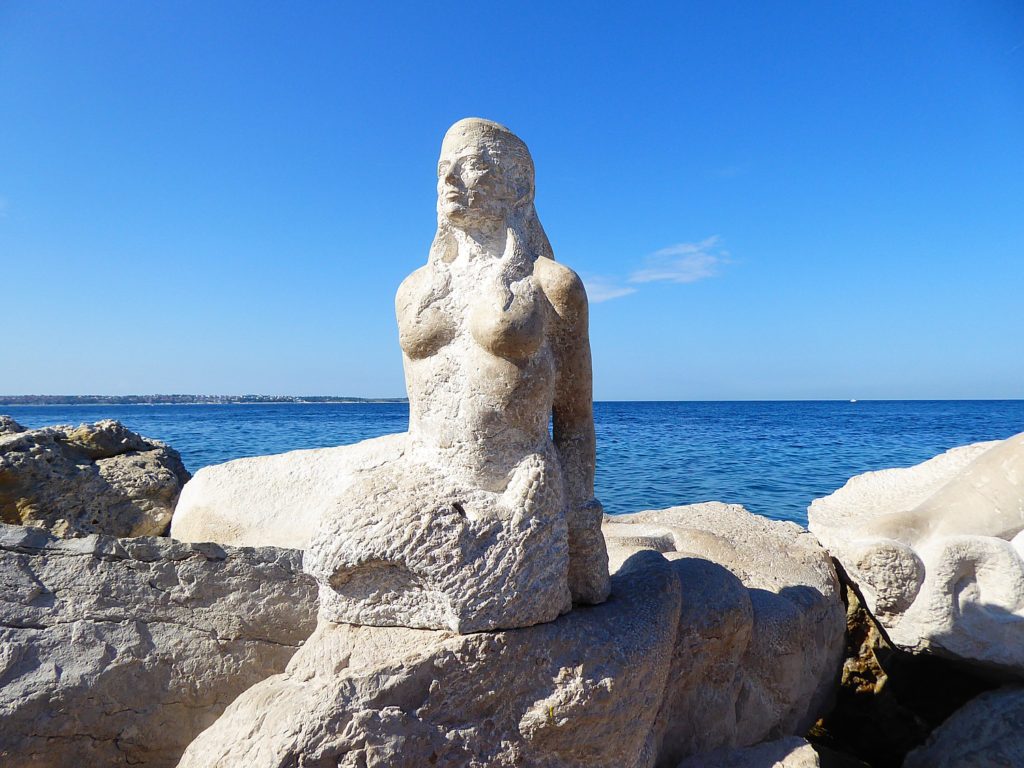
Art is everywhere in this whimsical, free-spirited place (women go bare-breasted; people change their bathing suits in public).
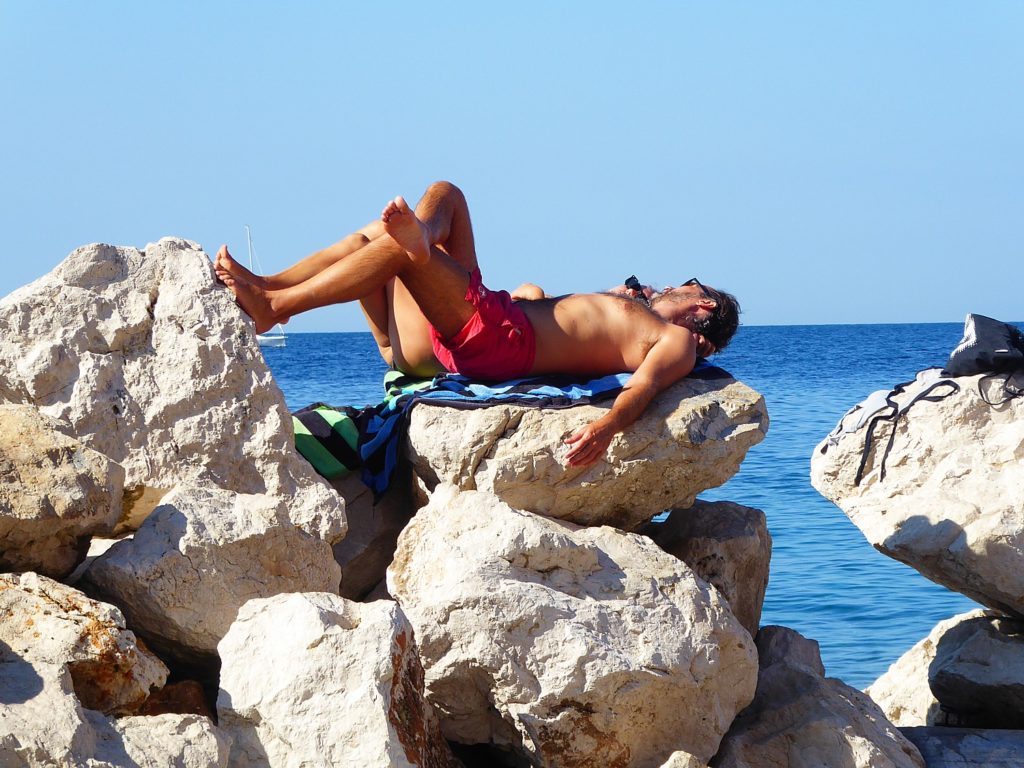
A free bus takes me one-third of the distance back to Portorose and I walk the rest of the way, along the glorious waterfront, to the station where I wait for the bus (flixbus.com) that will bring me back along much of the route I first traveled, back to Marco Polo International Airport in Venice, a chance to review in my mind the marvelous sights and experiences of the bike tour.
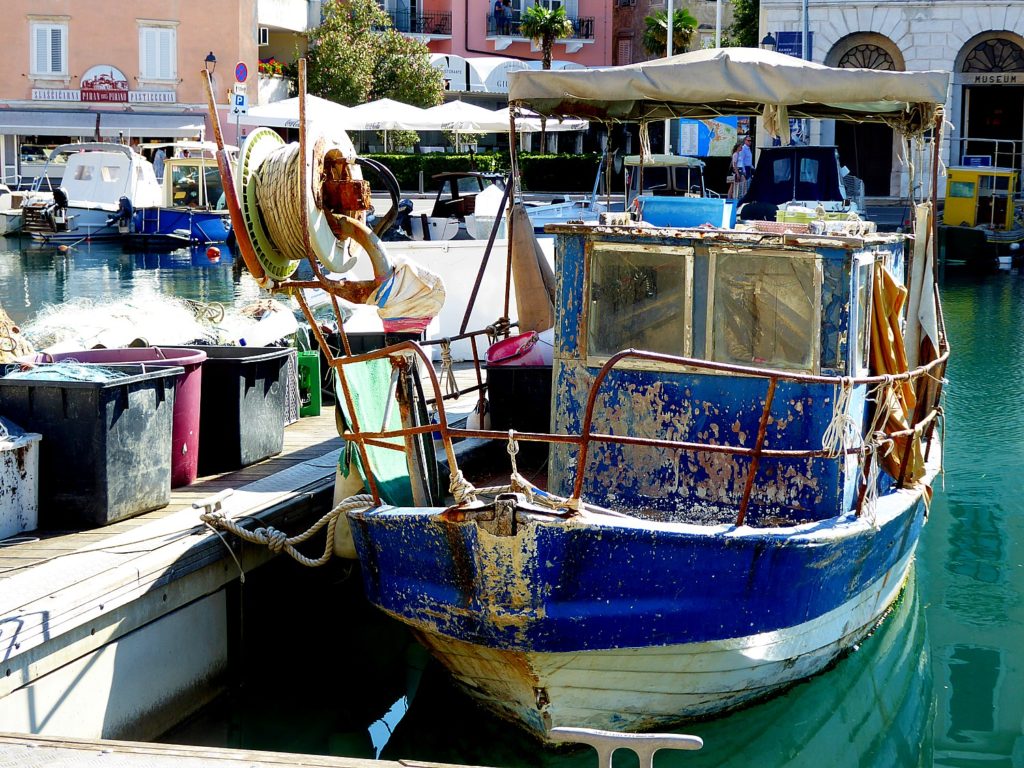
(I booked this 8-day “Emerald Tour of Slovenia’s Gems” guided bike tour through BikeTours.com, a broker which has an excellent catalog of well-priced guided and self-guided bike and bike/boat trips, mostly in Europe, and has very attentive counselors. Biketours.com, 1222 Tremont Street, Chattanooga, TN 37405, 423-756-8907, 877-462-2423, www.biketours.com, [email protected])
See also:
Caves, Castle Among Astonishing Sights Visited on Guided Bike Tour of Slovenia
Biketours.com 8-day Guided Ride Through Slovenia Offers Surprises
Setting Out on 8-Day Self-Guided #BikeTour from Venice Bound for Croatia
Following Whim and Whimsy in Venice
A Night Visit to the Doge Palace, Venice
Discovering Portorose, Slovenia and Porec, Croatia at End of 8-day Self-Guided BikeTour from Venice
_____________________________
© 2019 Travel Features Syndicate, a division of Workstyles, Inc. All rights reserved. Visit goingplacesfarandnear.com, www.huffingtonpost.com/author/karen-rubin, and travelwritersmagazine.com/TravelFeaturesSyndicate/. Blogging at goingplacesnearandfar.wordpress.com and moralcompasstravel.info. Send comments or questions to [email protected]. Tweet @TravelFeatures. ‘Like’ us at facebook.com/NewsPhotoFeatures
